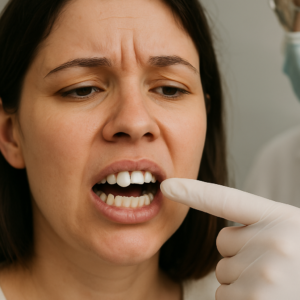Introducing the Fascinating History of Implant Dentistry
Throughout the history of implant dentistry, the field has undergone tremendous transformations, shaping the way we approach tooth replacement today. From its humble beginnings to contemporary innovations, the journey of dental implants is nothing short of remarkable. Understanding these developments provides valuable insights into how far we have come and how they influence practices today. The exploration begins with examining early attempts and primitive methodologies that laid the foundation for modern techniques. It’s fascinating to discover how historical ingenuity inspired the innovations we now enjoy. This journey through time unveils the milestones and evolutionary steps that have dramatically modernized dental care.
Remarkable changes in implant dentistry over the centuries have revolutionized how we regard oral health. Initially, materials were less sophisticated, but the core principle of replacing missing teeth remained consistent. Innovations and technological advancements have led to more sustainable, comfortable, and aesthetically pleasing solutions. From rudimentary stone and metal replacements, we’ve transitioned to advanced surgical procedures with biocompatible materials. Each historical advancement builds the bridge to the next, reflecting a rich legacy of adaptation and innovation in response to changing needs and technological progression. This tapestry of ingenuity notatahlights past achievements but also sets the stage for future developments in the realm of dental care.
Unveiling Early Developments and Pioneering Methods
The earliest attempts at replacing missing teeth can be traced back to ancient civilizations. Archaeological discoveries reveal intriguing insights into how societies like the Egyptians and Mayans practiced early forms of implant dentistry. These pioneers used materials such as shells, stones, and metals in their rudimentary attempts to restore dental functions. Although rudimentary, these techniques symbolize the persistent quest for restoration and aesthetics. The ingenuity of these early practitioners is astounding and offers a firm foundation for further explorations and innovations. Their relentless pursuit of solutions laid the groundwork for all subsequent evolutions in tooth restoration technology.
As history advanced, so did the sophistication of dental implants. The 20th century witnessed some of the most significant leaps, with the introduction of biocompatible materials like titanium revolutionizing the field. Research during this era established the pivotal concept of osseointegration, where the implant becomes a part of the jawbone. This innovation set a new standard for implant dentistry and is a practice still widely used today. It paved the way for further research into the materials and methods that enhance the durability and integration of implants. These pioneering developments underscore the unique interplay between human curiosity and medical necessity that fuels ongoing innovation in the field.
Celebrating Key Milestones and Revolutionary Breakthroughs
The history of implant dentistry is marked by key milestones that shaped its current state. A notable turning point was the research work of Per-Ingvar Brånemark in the mid-20th century, which affirmed titanium’s compatibility with the human body. His pioneering work earned him the title “father of modern dental implantology” due to his discoveries that transformed dental procedures globally. Such breakthroughs highlight the critical importance of research and collaboration in achieving transformative healthcare solutions. As these methodologies gained traction, the ensuing development led to the diversification of implant shapes, sizes, and techniques. These advancements enabled customized solutions tailored to diverse patient needs, leading to significantly improved outcomes.
Revolutionary breakthroughs in imaging technologies have further propelled the field into new frontiers, enhancing precision and outcomes. Computer-guided implantology and advanced diagnostic tools provide unprecedented accuracy in planning and placement. These innovations minimize surgical risks and enhance patient comfort and satisfaction in unprecedented ways. Meanwhile, interdisciplinary approaches continue to enrich the field, integrating insights from diverse scientific domains. This multidisciplinary collaboration fuels future-oriented strategies that anticipate and adapt to emerging challenges in dental care. The ongoing evolution highlights that implant dentistry is as much about honoring historical achievements as it is about anticipating future potential.
How the Evolution of Dental Implant Technology Improves Patient Outcomes
From early prototypes to today’s digital workflows, the evolution of dental implant technology has made treatments safer, faster, and more predictable. This progress directly benefits patients through shorter procedures, fewer surprises during surgery, and longer-lasting results.
Faster, Safer Procedures
Modern tools like guided surgery, CBCT imaging, and digital treatment planning allow clinicians to map implant positions precisely before making an incision. Surgical guides and real-time imaging minimize guesswork, shorten procedure times, and reduce complications. Patients benefit from shorter appointments, less trauma, and quicker recoveries.
Higher Long-Term Success Rates
Advances in implant materials—such as next-generation titanium alloys and surface coatings that encourage bone integration—have raised long-term success rates. Standardized surgical protocols and better osseointegration research mean implants today last longer and fail less often, giving patients greater confidence and durability with proper routine care.
Better Function and Natural Looks
Digital design tools, including CAD/CAM restorations and 3D-printed prosthetics, create crowns and bridges that match each patient’s bite and facial structure. Techniques like All-on-4 and improved abutment designs restore chewing function and aesthetics more accurately, resulting in smiles that look and feel natural.
More Options for Patients with Bone Loss
Advanced imaging and surgical techniques now allow clinicians to treat patients who once had limited options due to bone loss. Bone grafting, short or angled implants, and zygomatic implants can often replace the need for lengthy, multi-stage surgeries. This precision opens implant treatment to a broader range of patients and simplifies recovery.
What This Means for Everyday Patients
For patients, this evolution translates to less time off work, fewer surgical visits, and restorations that perform like natural teeth. Improved predictability lowers stress, reduces long-term repair costs, and enhances comfort and quality of life after treatment.
Embracing Modern Advances and Peering Into the Future
Contemporary implant dentistry thrives on groundbreaking techniques and advanced materials that prioritize patient health and aesthetics. Innovations such as all-on-four implants enable entire arches to be restored on four precisely placed implants. This method not only reduces treatment time but also enhances stability and performance, offering a quicker path to recovery and satisfaction. Additionally, the use of digital design and 3D printing technologies promises customized solutions with remarkable precision. This creative application of technology ensures that treatments are aligned with individual patient needs and expectations. As a result, today’s implant solutions offer unparalleled comfort, functionality, and natural appearance.
Looking to the future, implant dentistry is poised for even greater advancements, driven by continued research and technological evolution. Areas such as biomimetics and regenerative medicine open new possibilities for enhancing the biological integration of implants. Future innovations might enable the growth of new tissues and bones around implants, further improving outcomes. Emerging trends suggest a shift towards minimally invasive techniques that focus on patient comfort and faster healing processes. These exciting developments are a testament to the field’s dynamic nature, constantly pushing boundaries to improve lives. As we reflect on past achievements, we also embrace a future of limitless potential that redefines how we understand and approach oral health.
Questions to Ask About the Evolution of Dental Implant Technology Before You Choose Treatment
Understanding how dental implant technology has evolved empowers you to make informed choices about your care. Use the following questions to compare options, understand risks, and ensure your treatment plan fits your goals and budget.
Which Implant Systems and Materials Do You Use?
Ask whether your dentist uses titanium or zirconia implants, and what surface treatments support bone integration. Knowing the system’s material and clinical data can help you understand long-term compatibility, aesthetics, and success rates.
How Do You Plan Placement?
Confirm whether the practice uses CBCT scans, digital planning software, and surgical guides to ensure accuracy. These technologies improve placement precision and shorten surgical times. Ask if you’ll see a digital preview of your implant plan before surgery.
Is Any Part of the Process Done In-House?
Ask whether the dental practice offers in-house lab work or same-day restorations. Offices with on-site milling or 3D printing can shorten timelines, improve communication between clinicians and technicians, and fine-tune fit and aesthetics chairside.
What Are the Risks, Follow-Up, and Success Rates?
Request realistic success rates for your specific case type, and discuss how risks are managed. Clarify your follow-up schedule, maintenance requirements, and any warranty or replacement policy for implant components or restorations.
Cost, Financing, and Timeline
Get a detailed written estimate that breaks down surgical fees, implant parts, prosthetics, and any bone grafting. Ask about financing options, staged treatment plans, and estimated completion timelines. Clear expectations around cost and scheduling help ensure a confident, informed decision.
Integrating Historic Wisdom Into Modern Care
At Genuine Smiles, we celebrate the rich legacy of the history of implant dentistry by integrating time-tested wisdom with cutting-edge innovations. By understanding past practices, Dr. Mina Elfar guides patients through contemporary care options that leverage historical insights for optimal outcomes. This approach ensures that we don’t just offer solutions based on technology but enrich our service quality with a deep respect for tradition and history. The blend of historical wisdom and modern-day advancements enables us to deliver personalized, effective, and lasting implant solutions. Dr. Mina Elfar’s method is a holistic one, considering both the tried-and-true practices and the rapid advancements of today. Embracing this philosophy, we provide treatment options that respect each patient’s unique needs and history.
If you’re looking to benefit from dental care that honors the past while prioritizing modern excellence, we invite you to explore what our practice offers. Are you ready to restore your smile at our skilled and trusted dental practice? Don’t wait to get the smile of your dreams with us. Get in contact with our doctor, Dr. Elfar, and our exceptional team at our practice to schedule an appointment today!






